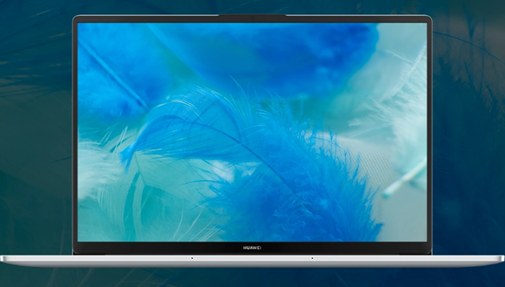Are we ready for 5G? Canadians say they’re ready, but there’s still work to be done
When the pandemic hit, offices were shuttered, schools closed, and home kitchen tables became makeshift offices or classrooms. It was also then that many people realized how dependent they were on fast and reliable Internet. Frustration grew as Zoom meetings crashed and classroom videos lagged while Canadians were suddenly asked to act as in-house IT departments. Connecting at home became the vital link to friends, work, and family, and people wanted a smooth and fast Internet experience.
In our recent ConsumerLab insight report titled “Five Ways to a Better 5G” – the biggest-ever 5G consumer study, representing the opinions of 1.3 billion smartphone users including 22 million smartphone users in Canada and 220 million 5G users globally – half of respondents said they believe 5G would facilitate working more on the go so they could take the office everywhere. Considering only 20 percent of Canadians said they want to return to the office every day, and 60 percent said they would prefer to be in offices only part-time or occasionally, working from anywhere will be part of the new normal.
Delivering a smoother Internet experience is just one way 5G will change how we work. With faster speeds, larger capacity and reduced latency, 5G unlocks a whole new world of possibilities, and consumers expect advancements that were once the realm of science fiction.
The report showed wireless service providers need to be clearer with consumers on what 5G will deliver and communicate that device upgrades are worthwhile, as the new experiences will be like no other.
Global findings also suggest consumers believe 5G will shift the way they interact with the Internet, with more capacity for 4K video and augmented- and virtual-reality experiences.
In fact, 5G wireless technology is already changing smartphone use in Canada. Early 5G adopters spend two hours more per week using cloud gaming and 90 minutes more on augmented-reality (AR) apps compared to 4G users. Fifteen percent say they have decreased their Wi-Fi usage, even at home, after upgrading. This suggests that for high-bandwidth applications, 5G finally delivers the experience consumers have been craving. In addition, consumers also want indoor coverage from 5G, which was viewed as being more important than speed or battery life.
Canada is still early in 5G adoption but that is changing as more devices are introduced to the market. Consumers are clearly excited by the potential of 5G experiences. Canadian operators began rolling out 5G in 2020, with currently more than 500,000 5G devices already in the hands of Canadians. Bell, Eastlink, Rogers, TELUS, and Xplornet have all committed to rolling out 5G and many have set ambitious plans to expand and enhance connectivity in various communities, both rural and urban, by the end of 2021.
The unprecedented investments in the 3500 MHz spectrum by telecommunications companies (three times more than expected) further demonstrates their commitment to 5G. Rogers invested C$3.3 billion in 5G spectrum, covering 99.4 per cent of the Canadian population, making it the largest single investor in 5G spectrum in the country. Bell spent $2.1 billion in the auction and TELUS $1.95 billion. Videotron spent nearly $830 million, with more than half of the investments in Ontario, Manitoba, Alberta and British Columbia – outside of its home market. Cogeco Communications spent $295 million to acquire spectrum in the Greater Toronto Area and several other Ontario regions. Xplornet’s $244 million investment in mid-band spectrum promises 5G technology across rural Canada with the rollout of its 5G wireless service starting in fall 2021.
The spectrum will offer Canadians more choice. By the end of 2023, 5G could penetrate the majority of existing coverage, providing an amazing opportunity for Canadians.
Winners of spectrum must meet ambitious targets at five, seven, 10 and 20 years for the deployment of 5G services. This will expedite the national rollout of 5G and significantly increase network capacity in rural communities.

These next 12-18 months will be transformative and undoubtedly show that Canada is poised to leverage all that 5G offers, but first some challenges must be addressed.
Any new technology faces issues of understanding and adoption. The ConsumerLab report found Canadian smartphone users are either confused about or not yet convinced of 5G’s benefits – 20 percent of Canadian smartphone users who own a 5G-ready smartphone are still using a 4G subscription while 15 percent are using a 4G smartphone but claim they are connected to a 5G network. This is mainly because Canadian operators are not yet differentiating 4G from 5G subscriptions, so very few are truly experiencing 5G in a meaningful way. It is expected that by this time next year, more 5G devices will be on the market, and differentiated applications and services will follow.
So, what’s behind this gap?
Our findings point to consumer confusion and a lack of clarity – not just in Canada but globally. The knowledge gap is caused by uncertainty around how 5G services, including whether access is included by default when purchasing a 5G device or requires a change of plan or a specific smartphone model, plus confusion around different versions and flavors of 5G caused by the use of technical jargon by providers. If the value of 5G was marketed in terms aligned with consumers’ needs and understanding, there is an opportunity to convince 20 percent of Canadian consumers, who already owned 5G-ready smartphones, to upgrade to a 5G plan. This presents a major opportunity for service providers to better educate consumers on 5G devices and plans, and drive innovation with 5G-rich media and applications since 80 percent of existing 5G users are dissatisfied with lack of innovative services and applications bundled with 5G plans. Talking about speeds and feeds sounds impressive, but the opportunity is lost if your customer doesn’t know how to access it, how 5G can enable new experiences or simplify daily life.
The ConsumerLab report also showed a misperception around 5G availability in Canada. Half of 4G users think 5G is either rarely available or available less than 30 percent of the time. The survey found that improving the availability of 5G accelerates the adoption. When users understood that 5G coverage was available in their location, they were five times more likely to upgrade their device.
Providers paid significant amounts in the 5G auction. There are opportunities in all markets as 5G unlocks innovation and causes disruptions, but consumers remain a key component: they know they want 5G but are unsure how to get there.
So far, we’ve been focussed on how 5G will impact and change the way consumers will engage with the internet and technology. It’s important to note that there are also significant opportunities for operators to go beyond the consumer market and consider their enterprise customers. It’s clear 5G will impact our everyday lives from remote surgeries to agricultural innovation on farms. It is the key to creating smart factories and realizing the value of Industrial IoT. From artificial intelligence to automation, 5G will help solve connectivity issues in manufacturing, transport, logistics, and energy and utilities. More to come on how 5G impacts enterprise; for the purposes of this discussion, we focus on consumer 5G experience represents a significant area of focus for Ericsson and our telecom provider partners.
Service providers can take five important steps now and, in the future, to encourage 5G adoption and improve the consumer experience. Spectrum has been purchased and networks are being upgraded and expanded across the country. While 5G speeds and availability make headlines, enhancing consumer understanding of 5G will also be critical in building demand so they can start to fully experience its transformative powers. Here are some recommendations on how to move forward:
If you build it, they will come. One quarter of smartphone users in Canada expect their provider to switch to 5G or will wait a maximum of six months before moving to one that does. They’re even willing to pay more for 5G services. Half say they would pay at least $10 more per month, provided their mobile plan includes 5G services of their liking. Like consumers, businesses are willing to pay a premium for 5G because they believe it will drive digital transformation. It is not often that customers are willing to pay more.
The record investment by telecom operators in the 5G spectrum auction is a clear indication of the commitment to offer faster deployment of 5G technologies across the country. We are proud to be working with our partners to lead the way on the 5G rollout in Canada.
Canadians want 5G. The devices our partners are launching, and the investments they have made in expanding the network, address all major consumer concerns. We just witnessed a significant year for regional and national investments, and these set the stage for 5G success over the next few years.
Consumers know what they want and service providers are equally clear in their intention to deliver on those expectations. Now, we need to improve the consumer experience, increase understanding of the potential for 5G and enhance our wireless infrastructure to meet the demand that is set to take off. 5G is no longer the technology of the future. It is here and Canada is ready.
Learn more about the ConsumerLab report here.








